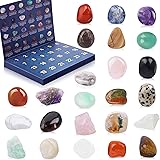Transform Your Kitchen: Mastering the Epoxy Kitchen Countertop with a White Marble Look
Did you know that homeowners embarking on DIY kitchen renovations can save up to 20% on overall costs compared to hiring professionals, often achieving stunning results that rival high-end installations? One of the most impactful and budget-friendly transformations you can undertake is upgrading your existing countertops with a beautiful, durable epoxy finish. For those dreaming of the luxurious appearance of white marble without the hefty price tag, an epoxy kitchen countertop offers an ideal solution, blending elegance with practicality.
The video above demonstrates the intricate process of creating a seamless white marble epoxy kitchen countertop, detailing crucial steps from preparation to the final protective layers. This guide will expand on those techniques, providing deeper insights and practical advice to help you achieve a professional-grade finish for your own epoxy countertops, ensuring a stunning and long-lasting upgrade to your kitchen.
The Seamless Advantage: Integrating Your Epoxy Backsplash
One of the innovative techniques highlighted in the video involves pouring full backsplashes horizontally and then securing them to the wall with silicone before the main countertop pour. This method ingeniously eliminates the need for unsightly caulking joints between the backsplash and the countertop. The result is a cleaner, more aesthetically pleasing transition that mimics the look of a solid slab.
Beyond aesthetics, this seamless integration offers significant practical benefits. Caulking joints are notorious for collecting grime, mildew, and bacteria, requiring frequent cleaning and eventual reapplication. By eliminating this vulnerability, your epoxy kitchen countertop system becomes easier to maintain and more hygienic, safeguarding against future redoes and ensuring a consistently pristine appearance for years to come. This approach significantly enhances the durability and longevity of your kitchen renovation.
Mastering the Two-Pour Epoxy Method for Depth
Achieving a truly professional and visually captivating finish, especially for a white marble epoxy look, often hinges on a strategic two-pour epoxy method. The video illustrates this critical process: an initial pour establishes the base colors, followed by a clear topcoat that allows for precise accent adjustments. This layered approach is fundamental to creating the coveted 3D look that gives epoxy countertops their unique depth and realism.
The first pour lays down the foundational pigments, forming the primary white of the marble and the initial groundwork for veining. Once this layer has reached a specific stage of curing, the clear topcoat is applied. This second layer serves multiple purposes: it encapsulates the base design, provides an extra layer of durability, and acts as a canvas for the nuanced accent colors. This method allows for greater control over the final aesthetic, enabling you to fine-tune the intensity and placement of the marble veins, resulting in a richer and more authentic white marble epoxy effect.
The Art of Rolling Edges: Preventing Streaks and Ensuring Even Flow
A critical step in the epoxy application process, often overlooked by beginners, is the careful rolling of the countertop edges immediately after the main pour. This technique is not merely about spreading the material; it’s about breaking the surface tension of the epoxy at the edges. Without this crucial step, the epoxy tends to “choose just a few paths,” leading to uneven runoff, undesirable streaks, or a less uniform appearance along the edges.
By rolling the edges first, you encourage a smooth, even flow of the epoxy over the sides. This ensures that the material breaks cleanly over the edge, creating a consistent thickness and a much smoother, more refined finish once cured. Taking your time during this phase, especially if your countertop is properly leveled, prevents a host of potential issues, ensuring the epoxy self-levels optimally across the entire surface and over the waterfall edges, resulting in flawless epoxy countertops.
Strategic Edge Priming for Flawless Finishes
Before any epoxy is poured, a vital preparatory step involves priming the edges of the countertop with a cureable pigment matching the exact color of your desired epoxy finish. As seen in the video, all edges were primed white for the white marble epoxy look. This seemingly minor detail serves as an indispensable safety net, especially when working with lighter colors.
Should the epoxy pour slightly thin on the edges, or if micro-bubbles form, the underlying primer ensures that the perfect white color still shines through, preventing any visible substrate or inconsistencies. This pre-pigmented prime coat guarantees color continuity and enhances the overall visual integrity of your epoxy kitchen countertop. It is a fundamental best practice for achieving truly professional and consistent results across all epoxy projects, regardless of the chosen color.
Banishing Bubbles: Torching Techniques for Epoxy Countertops
Air bubbles are a common adversary when working with epoxy resin. They can originate from the mixing process, the substrate off-gassing, or simply ambient air getting trapped. The video emphasizes the importance of lightly torching every square inch of the countertop, followed by a second pass at a 45 or 90-degree angle. This technique is critical for achieving a glass-smooth finish on your epoxy kitchen countertop.
Applying heat from a propane torch or heat gun reduces the viscosity of the epoxy, allowing trapped air bubbles to rise to the surface and pop. It’s crucial not to overheat the countertops, as this can lead to scorching or unwanted discoloration. The dual-pass method ensures comprehensive bubble removal, covering all angles and leaving no hidden pockets of air. While the torch is highly effective, consistent, controlled passes are key to maximizing bubble release without compromising the epoxy’s integrity. For best results, keep a watchful eye for any new bubbles that might surface as the epoxy cures and perform subsequent quick passes as needed.
Crafting Depth and Dimension: Accent Color Application for White Marble Epoxy
The creation of realistic marble veining is an artistic process that relies on a specific application technique for accent colors. The video details the use of a 91% isopropyl alcohol mix combined with powdered pigments. Alcohol is an ideal carrier for these colors as it completely evaporates without leaving any residue, thus preventing future yellowing or discoloration—a common concern with other solvents.
The method involves spraying each accent color (charcoal, silver, white pearl for a white marble look) across the entire countertop before moving to the next. Starting with the most contrasting color, like charcoal, allows you to establish the primary vein structure. Following with lighter, more diluted versions, such as silver, then white pearl, enables you to layer and blend these tones. This layering technique provides depth and ensures that if an initial spray is too drastic, it can be subtly toned down or blended with subsequent applications, achieving the natural, intricate patterns characteristic of genuine marble. This careful layering is essential for enhancing the 3D visual effect of your epoxy kitchen countertop.
From Trowel to Trim: Refining the Epoxy Surface and Managing Drips
As the epoxy begins to thicken slightly during its curing process, roughly two hours after pouring, it develops a consistency that allows for a “skip trowel pattern.” This technique can be used to add subtle textures or to further distribute the material as it starts to firm up. Beyond aesthetic applications, managing drips effectively is crucial for a clean finish and is much easier than sanding later.
The video advises initially scraping off drips with a putty knife when the product is still relatively runny, and continuing this process until the epoxy firms up sufficiently to stop dripping. This proactive approach prevents the formation of hard, cured drips that would require extensive sanding to remove. Regular passes with a putty knife ensure that the underside of your epoxy countertops remains as clean and smooth as the top, creating a professional and polished installation without the need for additional post-cure finishing work.
The Protective Finish: Why a Second Clear Coat Matters
While the initial epoxy pour provides stunning results, applying a second coat of clear resin offers significant enhancements to your epoxy kitchen countertop. This additional layer acts as a robust shield, protecting the intricate design and significantly boosting the countertop’s durability and longevity. It is a critical step for maximizing the life and beauty of your investment.
A second clear coat offers superior scratch resistance, increased UV protection (especially important for maintaining the pristine white of a white marble look), and an even deeper visual dimension, enhancing the ‘3D look’ of your veining. Moreover, it creates a much more level and uniform surface, providing a truly high-gloss, smooth finish. For homeowners seeking the ultimate in protection and aesthetic perfection for their DIY kitchen remodel, a meticulously applied second clear coat is an invaluable final touch to their epoxy countertops.











